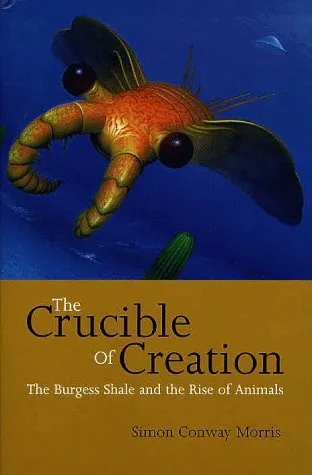The Crucible of Creation: The Burgess Shale and the Rise of Animals
By (author): "Simon Conway Morris"

ISBN0198502567
ISBN139780198502562
AsinThe Crucible of Creation: The Burgess Shale and the Rise of Animals
Original titleThe Crucible of Creation: The Burgess Shale and the Rise of Animals
We live on a wonderful planet that not only teems with life, but shows a marvellous exuberance of form and variety. From condors crossing tropical storms at altitudes as high as 6000 metres, to microscopic bacteria living many kilometres below the Earth's crust, life is pervasive.No one yet knows the precise total of species that presently inhabit the Earth, nor how many once existed but are now extinct, but the total must run into many billions. With such a vast array of life, it is perhaps surprising that only one species, our own, is able to understand and investigate its origins.Because we are different in so many ways from any other life form that has evolved on Earth, how do we know that our origins and history can be traced here, rather than as extra-terrestrial immigrants? The reason is simple: our evolutionary pedigree is stamped on every feature of our faces and bodies, and by looking at the fossil record, we can trace our progress back to and beyond those primitive fish whose basic brain structure is our inheritance today and whose fins and then limbs first propelled us through and then out of the water.In this book, renowned palaeontologist Simon Conway Morris explores how a single unit of rock, located in the west of Canada, and known as the Burgess Shale, has placed the history of life in a new set of contexts and so by implication has shed new light on our place in the scheme of evolution. He takes us through the fantastic discoveries of hitherto unknown species which were discovered in this isolated outcrop, where the processes of decay have been held in abeyance so that a window into the Cambrian period is opened to reveal the true richness of ancient life.We meet animals such as trilobites and molluscs, with tough, durable skeletons, but also, uniquely, soft-bodied animals from more than half-a-billion years ago.The Burgess Shale, with its remarkable richness of fossil remains has become an icon for anyone studying the history of life - a reference point of equal significance to Darwin's finches, which exemplifies the central role of adaptation.Professor Conway Morris guides us through the Burgess Shale and its significance, through the personalities involved, the mistakes they made, and most important of all considers whether the discoveries made there necessitate a radical reconsideration of the whole concept of evolution in the Darwinian framework.